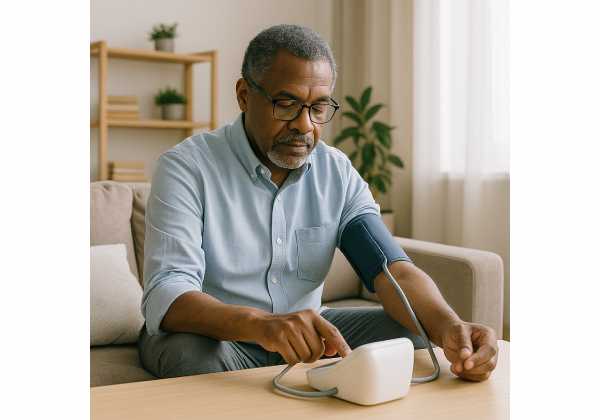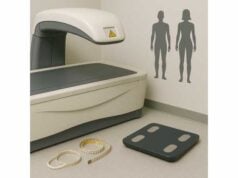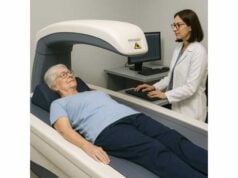
Home blood pressure tracking is one of the simplest ways to protect your brain, heart, and kidneys across decades. Done well, it turns a vague risk into concrete numbers you can act on. Done poorly, it misleads and delays treatment. This guide focuses on what actually matters for long-term health: choosing a validated cuff that fits your arm, using a repeatable technique, and interpreting averages—not one-off spikes. You will learn when morning and evening readings reveal different stories, how to build a clean seven-day log, and which numbers merit a call to your clinician. We will also cover common pitfalls—talking, crossed legs, caffeine—and how to avoid them. If you track other signals, pair your blood pressure log with our overview of objective biomarkers and tools for longevity, so your plan stays consistent and data-driven.
Table of Contents
- Pick the Right Cuff: Size, Arm vs Wrist, and Validation Lists
- Measurement Technique: Posture, Rest, and Positioning
- Scheduling Readings: Morning/Evening Protocols and Averages
- Understanding Targets and What “Normal” Means
- Common Errors: Talking, Crossing Legs, or Caffeine
- Logbook Basics: 7-Day Averages and Trend Watching
- When Numbers Mean Call Your Clinician
Pick the Right Cuff: Size, Arm vs Wrist, and Validation Lists
Start with fit. Accuracy collapses when the cuff is too small or too large. Measure the midpoint of your upper arm (between shoulder and elbow) with a tape:
- Small adult: ~17–22 cm
- Adult (standard): ~22–32 cm
- Large adult: ~32–42 cm
- Extra-large: ~42–52 cm (some brands offer >52 cm)
Choose a monitor that includes the correct cuff or allows you to buy the right size separately. If your arm is near the boundary, size up rather than squeeze into a too-small cuff.
Upper arm vs wrist. Prefer an upper-arm, automated, oscillometric device. Wrist monitors are a fallback for people with very large arms or limited shoulder mobility. If you must use a wrist device, keep the wrist at heart level and the palm over the chest during measurement. Even then, expect more variability than with an upper-arm cuff.
Validation matters. Not every device sold online meets modern accuracy standards. Look for monitors that have been validated using a universal protocol from major organizations (AAMI/ESH/ISO). Reputable lists and registries summarize models that pass; while specific links live outside this article, your device’s manual or product page should clearly state independent validation per that standard. If it does not, pick another model.
Power and memory. Select a device with AC power or a long battery life and built-in memory that stores at least 60–100 readings. Dual-user memory helps if two people share the cuff.
Comfort and usability. A cuff that slides on easily and sits comfortably at mid-arm will get used more. Check that:
- The artery marker aligns with the inside of your arm.
- The cuff covers 80% of arm circumference and two-thirds of arm length (most validated cuffs do).
- The tube length lets your arm rest on a table without tugging.
Calibrating against the clinic. Once you have your device, bring it to an appointment. After five minutes of rest, take simultaneous alternating readings (clinic device, then yours, then clinic). Differences of ~5 mmHg can occur; larger, consistent gaps deserve a review of cuff size, placement, or device choice.
Special cases. For persistent irregular heart rhythms, some devices flag arrhythmias; validation under arrhythmia conditions is less common, so interpretation should be cautious. For pregnancy, use a device explicitly validated in pregnant populations. If your upper arm is very large, explore extra-large cuffs or consider a well-executed wrist protocol while you work with your clinician on alternatives.
Investing in a proper cuff is the cheapest longevity “upgrade” you can buy. Get the size right, confirm validation, and you have a tool you can trust for years.
Measurement Technique: Posture, Rest, and Positioning
Technique makes or breaks home blood pressure. A few minutes of setup eliminates errors bigger than many medications can fix.
Set the stage
- Timing: Take readings before breakfast, caffeine, or morning medications, and again in the evening before bed or at least two hours after dinner.
- Rest: Sit quietly for five minutes. Avoid exercise, caffeine, nicotine, or a heavy meal for 30 minutes prior. Empty your bladder.
- Environment: Quiet room, stable temperature, no talking or texting.
Body position checklist
- Back supported, shoulders relaxed.
- Feet flat, legs uncrossed, knees not pressing chair.
- Arm bare, not over clothing.
- Arm supported at heart level on a table; use a pillow or towel to raise the forearm if needed.
- Cuff snug, lower edge ~2–3 cm above the elbow crease; artery marker aligned to the inside of the arm.
Run the sequence
- Take two readings, one minute apart. If they differ by >5 mmHg, take a third and average the two closest or all three.
- Use the same arm each session. If your clinician advises it, use the arm with higher pressure (determine by comparing both arms on a calm day).
- Breathe normally; do not hold your breath.
Clothing and accessories. Remove tight sleeves. Do not place the cuff over compression garments. Avoid measuring while wearing a smartwatch with active optical sensors on the cuffed arm.
Consistency beats intensity. The goal is a clean average, not a perfect single reading. When you keep the process identical day to day, your averages tell a reliable story about your vascular health.
Note the context. Write brief notes when life deviates from routine—poor sleep, travel, pain flare, new medication. These comments help you interpret outliers. If you track recovery metrics, use them to flag days when sympathetic “noise” may be higher; our short guide to wearable signal quality explains which sleep and recovery numbers are worth your attention.
Special situations
- Large arms: Confirm cuff size and seat height; a low table can force shoulder elevation, raising readings.
- Irregular rhythms: Devices may show variable readings; focus on averages, not single spikes.
- Orthostatic symptoms: If you feel lightheaded on standing, ask your clinician how to check a seated vs standing reading safely at home.
A measurement is only as good as the method. Treat the protocol like brushing your teeth—simple, repeatable, and part of the routine that protects your future self.
Scheduling Readings: Morning/Evening Protocols and Averages
Home readings should answer two questions: What is my true baseline? and How does it change over the day? The standard approach separates initial diagnosis from long-term monitoring.
For diagnosis or treatment changes
- Measure morning and evening for 7 consecutive days.
- Each session: take two readings one minute apart (add a third if the first two differ by >5 mmHg).
- Discard day 1 (often higher), then average the remaining days.
- Share the 7-day average with your clinician, not individual spikes.
Why both morning and evening? Morning pressure can be higher due to hormonal and autonomic surges, and evening readings capture post-activity recovery. Some people show masked hypertension (office normal, home high) or white-coat effect (office high, home normal); your pattern guides next steps.
For ongoing monitoring
- Once controlled, take readings 2–3 days per week, still at morning and evening.
- After medication changes, return to the 7-day protocol for two weeks to confirm the new baseline.
Ambulatory monitoring when needed
If your home numbers and clinic numbers disagree, or you suspect large swings, 24-hour monitoring clarifies daytime, nighttime, and early morning patterns. Ask your clinician about 24-hour monitoring to evaluate white-coat or masked hypertension, nocturnal dipping, and morning surge.
Handling outliers
- If a number seems off, wait 2–3 minutes and repeat once.
- Do not chase individual spikes unless you have symptoms (chest pain, severe headache, shortness of breath, neurologic deficits).
- When travel, illness, or pain flares skew a week, annotate the log and extend the monitoring window.
Building the average
- Keep separate averages for AM and PM and a combined daily mean.
- Track pulse alongside pressure; sudden changes can indicate dehydration, illness, or medication effects.
Medication timing
If you take blood pressure medication, morning vs evening dosing can affect readings. Do not change timing without guidance; use your log to discuss whether your current schedule maintains a steady 24-hour profile.
Seasonal shifts
Blood pressure often runs higher in winter and lower in summer. Keep monitoring through seasonal changes and after major lifestyle or weight changes.
Structured schedules produce honest numbers. When you and your clinician work from clean 7-day averages, decisions become straightforward—and safer.
Understanding Targets and What “Normal” Means
Targets vary by guideline and clinical context, but the principles are consistent: use averages, align thresholds with risk, and aim for numbers you can sustain without side effects.
Common home thresholds and goals
- For many non-pregnant adults, a home average below 135/85 mmHg is considered normal.
- Some care teams use <130/80 mmHg as a tighter treatment goal when tolerated, especially in people with higher cardiovascular risk (diabetes, chronic kidney disease, known atherosclerosis, or very high lipoprotein-related risk).
- Clinic thresholds differ. Do not directly compare an isolated office reading with a home average; they answer different questions.
Systolic vs diastolic
- Systolic (top number) is the stronger predictor of stroke and heart events in midlife and older adults.
- Isolated systolic hypertension (systolic high, diastolic normal) is common after age 50; it still warrants attention even when the bottom number looks “fine.”
Nocturnal patterns and morning surge
- A healthy pattern shows nighttime dipping (≈10–20% lower than daytime). Loss of dipping or a pronounced morning surge may increase risk; ambulatory monitoring, not occasional home checks, defines these patterns. If your morning averages run consistently higher than evenings, discuss whether medication timing should shift.
The bigger picture
Blood pressure is one risk pillar. Lipoproteins and metabolic health amplify or reduce the same risks. If your numbers are borderline, tightening other levers helps:
- Maintain apoB or non-HDL cholesterol in a healthy range through nutrition, activity, and—when needed—medication; see our practical overview of apoB and non-HDL targets.
- Improve insulin sensitivity with resistance training and walking after meals.
- Keep waist-to-height ratio in a healthy range and prioritize sleep quality.
When lower is not better
Chasing very low numbers can cause dizziness, falls, and poor kidney perfusion, especially with aggressive combinations. If you experience lightheadedness on standing, near-syncope, or fatigue after medication changes, flag it. The correct goal is the lowest pressure you can live with comfortably, not the lowest possible on paper.
How fast to expect change
Lifestyle changes can move averages within weeks, medications often within days to weeks, and structural vessel changes over months. Recheck with focused 7-day blocks after any major adjustment rather than reacting to day-to-day noise.
Targets should be specific and personal. Align them with your risk profile, side-effect tolerance, and life goals—and confirm progress with clean weekly averages.
Common Errors: Talking, Crossing Legs, or Caffeine
Small mistakes push readings up or down by 5–15 mmHg, enough to misclassify your status. Eliminate these errors first.
Posture and support
- Crossed legs: Raises systolic by ≈5–8 mmHg. Keep feet flat on the floor.
- Unsupported back or arm: Increases muscle tension and readings. Always support both.
- Arm below heart level: Overestimates pressure; above heart underestimates. Use a table or pillow to level the cuff with your heart.
Activity and substances
- Caffeine or nicotine within 30 minutes: Temporarily raises pressure. Delay measurement.
- Exercise within 30 minutes: Can raise or lower pressure depending on intensity and recovery. Measure before workouts or after full cooldown.
- Alcohol: Alters autonomic tone and vessels; avoid measuring soon after drinking.
Talking and distractions
- Talking, reading aloud, or texting: Increases sympathetic activity. Sit quietly and breathe normally.
- Cold room or stress: Tightens vessels. Warm the room and take a brief pause to relax.
Cuff and clothing
- Over clothing: Adds bulk and friction. Measure on a bare arm.
- Wrong cuff size: Too small overestimates; too large underestimates. Confirm your arm circumference and cuff range.
- Loose cuff: Allows movement; fit should be snug with two fingertips sliding under the edge.
Sequence mistakes
- Single reading: Always take two, separated by a minute; add a third if the first two differ by >5 mmHg.
- Switching arms day to day: Introduces noise. Pick one arm and stick with it unless your clinician instructs otherwise.
Devices and batteries
- Low battery: Causes erratic inflation and noisy readings. Keep spares or use AC power.
- Unvalidated device: If readings feel inconsistent despite good technique, consider that the device may not meet modern standards.
Context clues
- Note pain, poor sleep, illness, or new medications—all can elevate pressure temporarily. If you track recovery, a simple morning check of pulse and resting heart rate can help you decide whether to interpret a borderline reading cautiously; our quick primer on resting heart rate and HRV covers what’s useful.
Fix the basics first. Correcting these common errors tightens your averages, reduces anxiety, and lets you and your clinician make decisions with confidence.
Logbook Basics: 7-Day Averages and Trend Watching
A clear log turns scattered numbers into a signal you can trust. Keep it simple, consistent, and shareable.
What to record each session
- Date and time
- Systolic/diastolic for each reading (2–3 readings; record all)
- Pulse
- Arm used and cuff size (note once, confirm if changed)
- Notes: caffeine, exercise, pain, illness, travel, new meds, poor sleep
Building the weekly summary
- For diagnosis or medication changes, use the 7-day morning and evening protocol.
- Discard day 1, then compute:
- AM average, PM average, and combined average
- Range (min–max) to visualize variability
- Keep the raw readings; clinicians often like to see the spread, not just the mean.
Simple thresholds for trend flags
- Green: weekly home average <135/85 mmHg (or your personalized goal)
- Yellow: average near threshold; review technique, lifestyle, and adherence
- Red: sustained average ≥135/85 mmHg (or above your target) across two clean weeks—plan a clinician conversation
Make graphs work for you
- Plot AM, PM, and weekly mean. A moving 4-week average smooths noise.
- Watch for drift rather than day-to-day bumps.
- Annotate medication changes and major life events (travel, illness, job stress).
Device hygiene
- Replace cuffs every few years if fabric loosens.
- Check accuracy annually by comparing with a clinic reading using a proper protocol.
- Keep the device clean and stored away from direct sun or extreme cold.
Integrate with other health markers
Blood pressure trends sit alongside kidney health, lipids, and glucose. As you review your log each quarter, schedule paired labs to see the broader picture; for context on kidney markers that often travel with hypertension, see our quick guide to eGFR and albumin checks.
Share smart
- Bring your 7-day report and graphs to appointments.
- If your device exports data, provide the file and a one-page summary.
- Keep privacy in mind if you share logs through messaging apps or email.
A tidy log gives you leverage. It highlights progress, motivates habits, and prompts timely adjustments long before high numbers cause silent damage.
When Numbers Mean Call Your Clinician
Most high home readings are opportunities—not emergencies. Still, certain patterns deserve prompt attention. Use these guardrails to decide what to do next.
Urgent red flags (seek immediate care)
- ≥180/120 mmHg and any concerning symptoms: severe chest pain, shortness of breath, new neurologic symptoms (weakness, facial droop, trouble speaking), confusion, or visual changes. Call emergency services.
- A single ≥180/120 mmHg without symptoms that stays elevated after two repeats five minutes apart. Do not drive yourself if you feel unwell.
Call your clinician soon (within 24–48 hours)
- Sustained home averages above your agreed goal—often ≥135/85 mmHg—across two clean weeks despite good technique and adherence.
- Morning–evening gap where mornings are consistently much higher than evenings; medication timing may need adjustment.
- Large arm-to-arm difference (e.g., ≥10–15 mmHg) on repeated checks; this can indicate vascular issues and merits evaluation.
- New orthostatic symptoms (lightheadedness on standing) after medication changes or weight loss.
Low readings and symptoms
- <90/60 mmHg with dizziness, fainting, or fatigue warrants a review of medications, hydration, and timing.
- If you feel unsteady or cognitively foggy with lower numbers, share the log; lower is not always better.
Special situations
- Pregnancy or postpartum: High readings or new symptoms (headache, visual changes, swelling, epigastric pain) require prompt clinical guidance.
- Kidney disease, diabetes, or cardiovascular disease: Your targets may be stricter, and persistent elevations carry greater risk. Discuss earlier adjustments.
What to do while you wait for advice
- Confirm technique and cuff size.
- Avoid extra caffeine, alcohol, and NSAIDs.
- Resume or adhere to medications as prescribed; do not self-adjust doses unless instructed.
- If safe, take a short walk and practice slow breathing (exhale longer than inhale) to reduce sympathetic drive while you arrange follow-up.
Home numbers guide smart decisions when they are clean and contextualized. Use thresholds to trigger a conversation—not panic—and partner with your clinician on steady, sustainable control.
References
- 2023 ESH Guidelines for the management of arterial hypertension (2023) (Guideline)
- Home blood pressure monitoring: methodology, clinical relevance and practical application: a 2021 position paper by the Working Group on Blood Pressure Monitoring and Cardiovascular Variability of the European Society of Hypertension (2021) (Guideline/Position Paper)
- Measurement of Blood Pressure in Humans: A Scientific Statement From the American Heart Association (2019) (Guideline)
- A universal standard for the validation of blood pressure measuring devices: Association for the Advancement of Medical Instrumentation/European Society of Hypertension/International Organization for Standardization collaboration statement (2018) (Guideline/Standard)
- Systematic Review of Self-Measured Blood Pressure Monitoring With Support: Intervention Effectiveness and Cost (2022) (Systematic Review)
Disclaimer
This article is educational and does not replace personalized medical advice, diagnosis, or treatment. Do not start, stop, or change any medication without guidance from a qualified clinician. If your home readings are very high or you develop symptoms such as chest pain, severe headache, shortness of breath, weakness, or confusion, seek urgent care. Device choice and technique affect results—confirm your setup with your clinician if numbers seem inconsistent.
If you found this guide useful, please consider sharing it on Facebook, X, or another platform you prefer, and follow us for future updates. Your support helps us continue producing careful, evidence-informed content.










